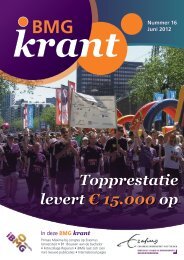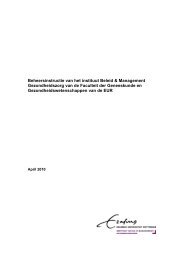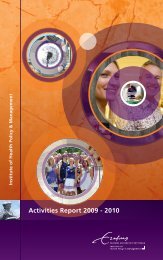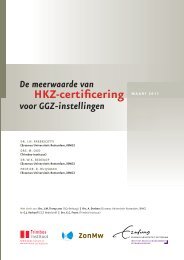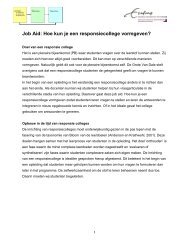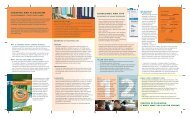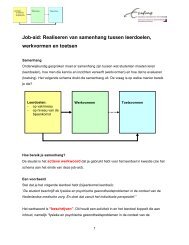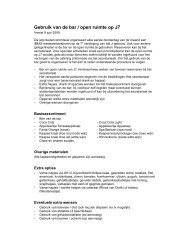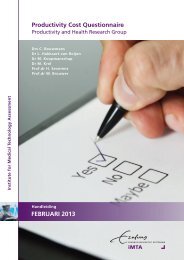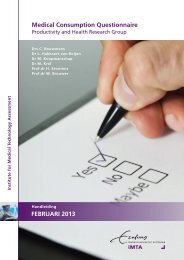Marten J. Poley - Erasmus Universiteit Rotterdam
Marten J. Poley - Erasmus Universiteit Rotterdam
Marten J. Poley - Erasmus Universiteit Rotterdam
- No tags were found...
Create successful ePaper yourself
Turn your PDF publications into a flip-book with our unique Google optimized e-Paper software.
136Chapter 8the methods used, for example, to assess the costs related to work absence byparents and other caregivers, to measure future productivity costs of children, toevaluate children's HRQoL, and to measure utilities and calculate QALYs inchildren. Methods of these and other components of pediatric economicevaluations merit further research.8.6 CONCLUDING REMARKSWe have reached the end of our guided tour, which was aimed at seeing theresults from a variety of perspectives. This short tour could by no means cover allthis thesis' results. We selected some topics, while setting aside others.Important issues were treated rather summarily. Still, we should now be able toreconsider the main message of this thesis stated at the beginning of thischapter. This comes down to answering the question of whether the resultsdepend on the perspective chosen. What is being argued here is that the resultsare firmly in favor of neonatal surgery, and not merely a matter of perspective.The analysis presented in this chapter confirmed that the child and his or herparents, the pediatric specialist, the decision maker, and the health economicsresearcher have different perspectives. Somewhat different aspects of the resultsmay attract attention from each of these perspectives. Yet, if we try to arrive at acommon conclusion, the general tenor of it is favorable for neonatal surgery.Generally speaking, the common conclusion would read as follows.This thesis approached the question of the balance between the costs and effectsof neonatal surgery and that of the balance between the cost-effectivenessargument and other arguments in health care allocation debates—a matter ofbalance indeed. The results revealed that neonatal surgery yields good costeffectiveness.However, this conclusion should be tempered with a fourfoldcaveat, as can be derived from the guided tour described in this chapter. First,the favorable cost-effectiveness may not be true in each and every case: thegood results may not be valid in the exceptional cases of patients born withsevere multiple anomalies. Second, further advancements in the care of patientswith ARM or CDH remain wanted: the mortality and HRQoL outcomes of thesepatients appeared imperfect, leaving room for improvement. Third, expanding theknowledge of the cost-effectiveness of neonatal surgery would still be welcome,the road to which has to involve upgrading the methodology of economicevaluations in pediatric populations. This especially applies to neonatal surgicaldiseases other than ARM and CDH, on which this thesis offered only ratherspeculative conclusions. Fourth, cost-effectiveness is not all that counts: conflictsbetween the moral claims of efficiency and equity may arise, and when allocatingresources, trade-offs between them must be made. This should be recognizedespecially for neonatal surgery, as equity arguments (considering the patients'age and disease severity) and ethical arguments at the level of individual decisionmaking may be powerful. Despite these reservations, this thesis represents a





